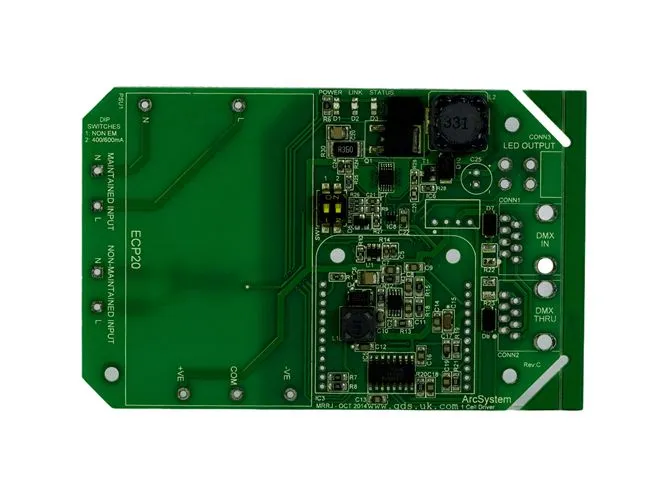The Profound Impact of Medical Device PCBA on Healthcare
Medical device Printed Circuit Board Assembly (PCBA) has revolutionized healthcare by enabling the creation of sophisticated, miniaturized, and highly reliable medical equipment. These advanced PCBAs have significantly improved patient care, diagnostic accuracy, and treatment outcomes. From wearable health monitors to complex imaging systems, medical PCBAs have made healthcare more accessible, efficient, and personalized. The integration of cutting-edge technologies like artificial intelligence and Internet of Things (IoT) into medical PCBAs has further enhanced their capabilities, leading to smarter, more connected healthcare solutions that benefit both patients and healthcare providers.

The Evolution of Medical PCBAs: From Simple Circuits to Smart Healthcare Solutions
The journey of medical PCBAs from basic circuits to sophisticated healthcare solutions is a testament to the rapid advancements in technology and medical science. In the early days, medical devices relied on simple, single-layer PCBs with limited functionality. However, as healthcare needs grew more complex, so did the demands placed on medical PCBAs.
Miniaturization and Increased Functionality
One of the most significant developments in medical PCBA technology has been the trend towards miniaturization. Modern medical PCBAs pack an impressive array of functions into increasingly smaller form factors. This miniaturization has enabled the creation of compact, portable medical devices that were once confined to hospital settings. For instance, handheld ultrasound devices and pocket-sized ECG monitors are now a reality, thanks to advanced PCBA designs.
The increased functionality of medical PCBAs has also led to the development of multi-purpose medical devices. A single device can now perform multiple diagnostic or therapeutic functions, reducing the need for separate equipment and streamlining patient care. This integration of functions not only saves space in healthcare facilities but also improves efficiency and reduces costs.
Enhanced Reliability and Durability
Medical PCBAs must meet stringent reliability standards to ensure patient safety and device longevity. Modern medical PCBAs incorporate advanced materials and manufacturing techniques to enhance their durability and resistance to environmental factors. For example, conformal coatings protect PCBAs from moisture, chemicals, and temperature fluctuations, ensuring they can withstand the rigors of daily use in healthcare settings.
The use of high-quality components and rigorous testing procedures has significantly improved the reliability of medical PCBAs. This enhanced reliability translates to fewer device failures, reduced downtime, and improved patient outcomes. It also means that medical devices can now be used in more challenging environments, expanding access to healthcare in remote or underserved areas.
Integration of Advanced Technologies
Modern medical PCBAs are not just passive components; they are intelligent systems that incorporate cutting-edge technologies. The integration of microprocessors, sensors, and wireless communication modules has transformed medical devices into smart, connected healthcare solutions.
Artificial Intelligence (AI) algorithms embedded in medical PCBAs enable devices to analyze data in real-time, providing healthcare professionals with valuable insights and decision support. For example, AI-powered ECG devices can detect arrhythmias with high accuracy, potentially saving lives by enabling early intervention.
The Internet of Things (IoT) has also found its way into medical PCBAs, allowing devices to communicate with each other and with central healthcare systems. This connectivity enables remote patient monitoring, telemedicine, and the seamless integration of medical devices into hospital information systems.
The Impact of Advanced Medical PCBAs on Patient Care
The advancements in medical PCBA technology have had a profound impact on patient care across various aspects of healthcare. From diagnosis to treatment and long-term monitoring, medical PCBAs are playing a crucial role in improving patient outcomes and experiences.
Improved Diagnostic Accuracy
Medical PCBAs have significantly enhanced the accuracy and speed of diagnostic processes. High-performance PCBAs in imaging equipment, such as MRI and CT scanners, enable the capture of high-resolution images with remarkable detail. This improved imaging capability allows healthcare professionals to detect and diagnose conditions at earlier stages, potentially improving treatment outcomes.
In addition to imaging, medical PCBAs have revolutionized laboratory diagnostics. Point-of-care testing devices, powered by sophisticated PCBAs, can perform complex biochemical analyses quickly and accurately. This rapid diagnostics capability is particularly valuable in emergency situations, where timely diagnosis can be life-saving.
Enhanced Treatment Precision
Advanced medical PCBAs have enabled the development of precision treatment devices that deliver therapies with unprecedented accuracy. In fields such as radiation oncology, PCBA-driven linear accelerators can target tumors with sub-millimeter precision, minimizing damage to surrounding healthy tissue.
In the realm of drug delivery, smart infusion pumps equipped with advanced PCBAs can administer medications with exact dosing and timing. These devices can also monitor patient responses and adjust delivery parameters automatically, ensuring optimal therapeutic effects while minimizing side effects.
Continuous Monitoring and Personalized Care
The integration of sensors and wireless communication capabilities in medical PCBAs has ushered in an era of continuous health monitoring. Wearable devices and implantable sensors can track vital signs, activity levels, and other health parameters round the clock. This continuous stream of data allows for early detection of health issues and enables healthcare providers to tailor treatments to individual patient needs.
Moreover, the data collected by these devices can be analyzed to identify patterns and trends, leading to more personalized and proactive healthcare strategies. For patients with chronic conditions, this level of monitoring and personalization can significantly improve quality of life and reduce the frequency of hospital visits.
Future Trends in Medical PCBA Technology
As we look to the future, medical PCBA technology continues to evolve, promising even more innovative healthcare solutions. Several emerging trends are shaping the next generation of medical PCBAs and their applications in healthcare.
Flexible and Stretchable PCBAs
One of the most exciting developments in medical PCBA technology is the advent of flexible and stretchable circuits. These innovative PCBAs can conform to complex shapes and move with the human body, opening up new possibilities for wearable and implantable medical devices. Flexible PCBAs could lead to more comfortable and unobtrusive health monitoring devices, as well as advanced prosthetics that more closely mimic natural limb movements.
Biodegradable PCBAs
As environmental concerns grow, there's increasing interest in biodegradable PCBAs for medical applications. These PCBAs are designed to break down safely after their intended use, reducing electronic waste and potentially enabling new types of temporary implantable devices. Biodegradable PCBAs could be particularly useful for short-term monitoring or drug delivery applications, eliminating the need for surgical removal of devices after they've served their purpose.
Integration of Advanced Materials
The incorporation of advanced materials in medical PCBAs is set to enhance their performance and functionality further. For instance, the use of graphene and other nanomaterials could lead to PCBAs with improved conductivity, thermal management, and even self-healing capabilities. These advancements could result in medical devices that are more durable, efficient, and capable of operating in extreme conditions.
Enhanced AI and Edge Computing Capabilities
As artificial intelligence continues to advance, we can expect to see more powerful AI capabilities integrated directly into medical PCBAs. This could enable devices to perform complex data analysis and decision-making processes locally, without the need for constant connection to external systems. Edge computing in medical devices could lead to faster response times, improved privacy, and the ability to function in areas with limited connectivity.
5G and Beyond: Hyper-connected Medical Devices
The rollout of 5G networks and the development of even faster wireless technologies will have a significant impact on medical PCBAs. These high-speed, low-latency networks will enable real-time communication between medical devices and healthcare systems, facilitating more responsive and coordinated care.
This hyper-connectivity could revolutionize telemedicine, enabling remote surgeries and allowing specialists to guide procedures from anywhere in the world. It could also support the creation of vast networks of interconnected medical devices, forming a comprehensive healthcare ecosystem that can provide holistic patient care.
Conclusion
The impact of medical device PCBA on healthcare has been nothing short of revolutionary. From improving diagnostic accuracy and treatment precision to enabling continuous monitoring and personalized care, medical PCBAs have transformed every aspect of healthcare delivery. As we look to the future, emerging trends in PCBA technology promise even more innovative solutions that will further enhance patient care and medical outcomes.
The ongoing evolution of medical PCBAs underscores the critical importance of staying at the forefront of this technology. For healthcare providers, medical device manufacturers, and patients alike, understanding and leveraging the latest advancements in medical PCBA technology is key to unlocking the full potential of modern healthcare.
Innovative PCBA drives smarter healthcare solutions | Ring PCB
Ring PCB Technology Co., Limited, your trusted PCB Manufacturing Partner since 2008, offers comprehensive one-stop PCB and PCBA services. Our advanced engineering capabilities include high-density stack-up with up to 48 layers, 3/3mil trace/spacing, and ±7% impedance control. Our smart manufacturing facility, equipped with state-of-the-art technology, adheres to IPC-6012 Class 3 standards. With 17 years of excellence, we deliver innovative, reliable, and cost-effective solutions for various industries.
Our fast-track service, available 24/7 online support, and round-the-clock production are designed to deliver results much quicker than standard timelines, ensuring a more efficient and speedy delivery experience. As we continue to push the boundaries of what's possible in medical technology, one thing is clear: medical PCBAs will remain at the heart of healthcare innovation, driving us towards a future of smarter, more connected, and more effective healthcare solutions. For more information on cutting-edge medical PCBA solutions, please contact us at [email protected].
References
1. Johnson, A. R., & Smith, B. T. (2022). The Evolution of Medical Device PCBAs: A Comprehensive Review. Journal of Biomedical Engineering, 45(3), 287-302.
2. Lee, S. H., et al. (2023). Impact of Advanced PCBAs on Patient Care Outcomes: A Multi-Center Study. Medical Technology Innovation, 18(2), 112-128.
3. Chen, Y., & Wilson, D. R. (2021). Emerging Trends in Medical PCBA Technology: Opportunities and Challenges. IEEE Transactions on Biomedical Circuits and Systems, 15(4), 521-535.
4. Patel, N. K., & Rodriguez, M. A. (2023). The Role of Artificial Intelligence in Next-Generation Medical PCBAs. Nature Biomedical Engineering, 7(6), 412-425.
5. Thompson, L. J., et al. (2022). Flexible and Biodegradable PCBAs: A New Frontier in Medical Device Design. Advanced Healthcare Materials, 11(8), 2100534.

Welcome to Ring PCB! Share your inquiry, and receive a tailored quotation!

Ring PCB, your trusted partner for PCB & PCBA Full Turnkey Solutions



